I was ready for an off-the-beaten-path walk, maybe somewhere semi-industrial, but my husband’s aunt Tracey was in town, and dragging her somewhere like that didn’t seem fair—especially once I realized she had never seen the Lower Riviera. For me, it’s up there with the Presidio in terms of neighborhoods that define Santa Barbara, and yet few visitors explore it.
 We parked on Alameda Padre Serra and soon found ourselves in the lower half of Orpet Park. Tracey lives in Maryland and is a Master Gardener, so she has high expectations for what a park should look like in summer. I can’t remember the exact word she used to describe Orpet Park—neglected? forlorn?—but it was spicy, and she was especially perturbed given that the park is named for a horticulturist. I suspect that the city’s Parks and Recreation Department prioritizes more highly used parks.
We parked on Alameda Padre Serra and soon found ourselves in the lower half of Orpet Park. Tracey lives in Maryland and is a Master Gardener, so she has high expectations for what a park should look like in summer. I can’t remember the exact word she used to describe Orpet Park—neglected? forlorn?—but it was spicy, and she was especially perturbed given that the park is named for a horticulturist. I suspect that the city’s Parks and Recreation Department prioritizes more highly used parks.

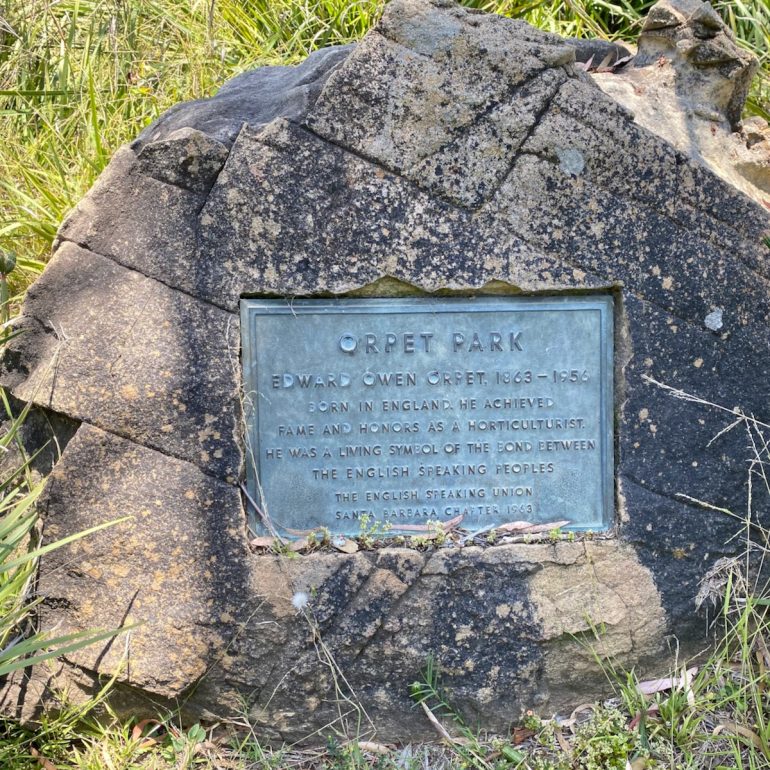 It’s interesting which tragedies get memorials. I wonder why Southern California Edison was involved, and why Orpet Park was chosen.
It’s interesting which tragedies get memorials. I wonder why Southern California Edison was involved, and why Orpet Park was chosen.
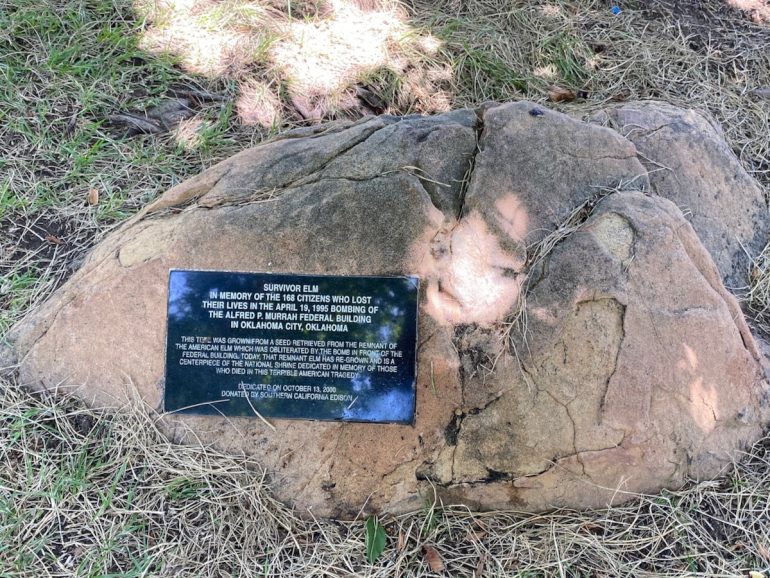 A path at the edge of the park leads to the houses on the southern side. How fantastic to have a park outside your backyard!
A path at the edge of the park leads to the houses on the southern side. How fantastic to have a park outside your backyard!

 And check out these stone stairs leading from the park to APS.
And check out these stone stairs leading from the park to APS.
 Much of the neighborhood’s character comes from the hillside location. The hills also make for challenging walking, of course, particularly on a hot day. (California Street is so steep it’s even hard to walk down.) I managed to smear sunscreen and/or sweat on my camera lens, hence the fuzzy quality of many of the photos.
Much of the neighborhood’s character comes from the hillside location. The hills also make for challenging walking, of course, particularly on a hot day. (California Street is so steep it’s even hard to walk down.) I managed to smear sunscreen and/or sweat on my camera lens, hence the fuzzy quality of many of the photos.

 The hills make for some cool entrances to houses. This one on APS reminded me of Barbary Lane from Tales of the City.
The hills make for some cool entrances to houses. This one on APS reminded me of Barbary Lane from Tales of the City.
 Another key characteristic of the Lower Riviera: the many streets that split. The last one below is the western end of Loma Street, which turns into E. Pedregosa once it curves north.
Another key characteristic of the Lower Riviera: the many streets that split. The last one below is the western end of Loma Street, which turns into E. Pedregosa once it curves north.



 The neighborhood is a terrific mix of architecture, from various eras and in various states. Take these houses, all on Loma Street. Bonus points for the ones you can see through.
The neighborhood is a terrific mix of architecture, from various eras and in various states. Take these houses, all on Loma Street. Bonus points for the ones you can see through.
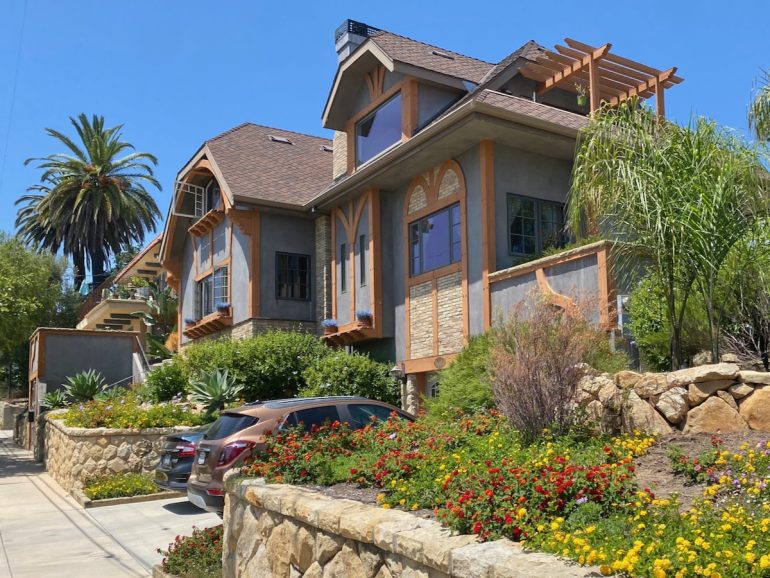

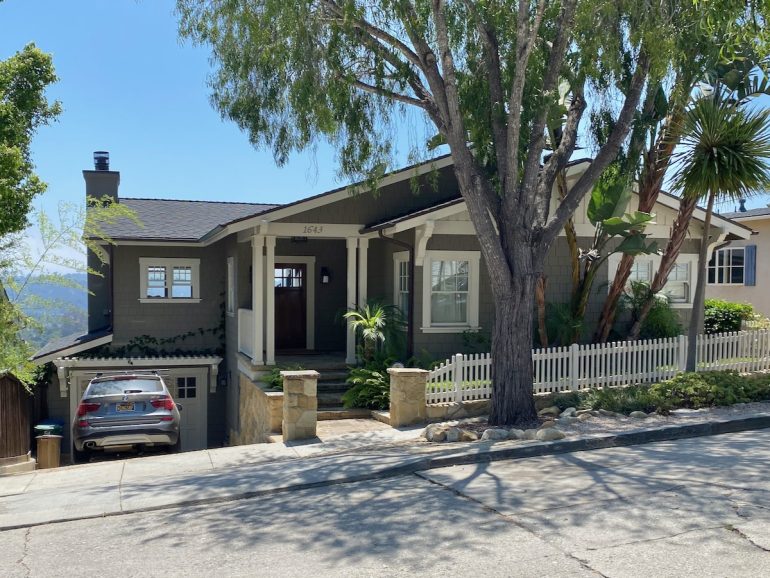
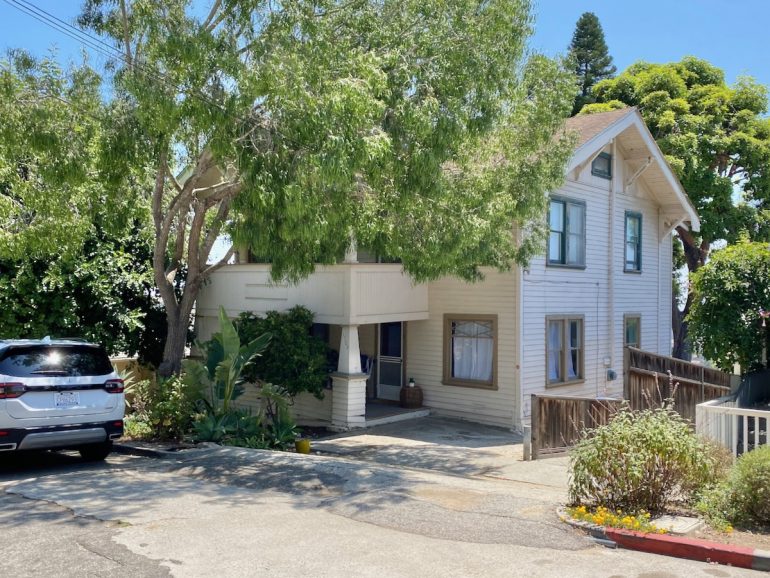


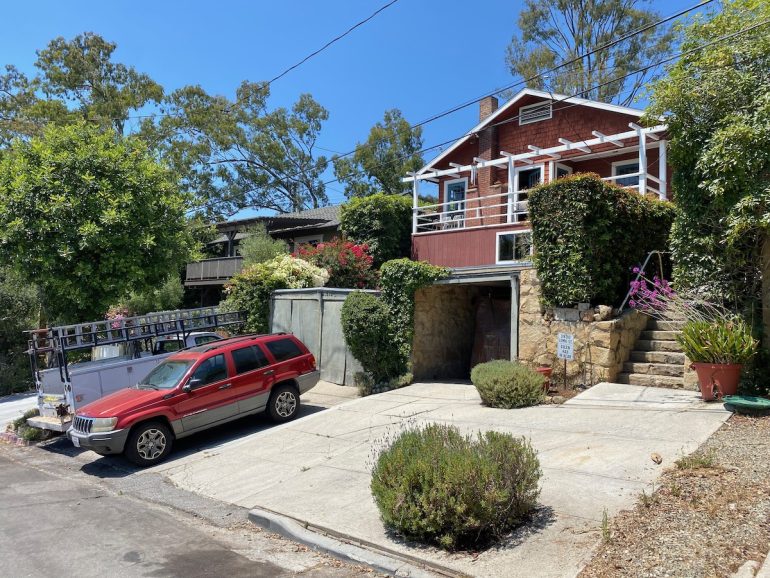
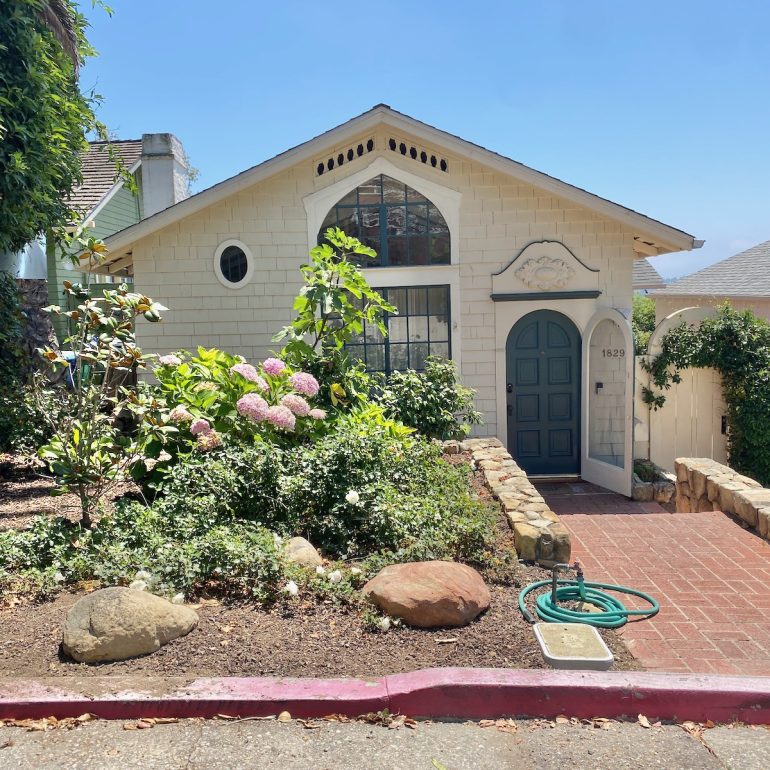 Tracey and I agreed that this curved entry path lined with boxwood was a winner.
Tracey and I agreed that this curved entry path lined with boxwood was a winner.
 There’s also a fair amount of infill from the second half of the 20th century.
There’s also a fair amount of infill from the second half of the 20th century.
 The apartments-above-carports look of this Grand Avenue building is very L.A. The vestigial stone stairs on the corner make you mourn for whatever it was that got demolished.
The apartments-above-carports look of this Grand Avenue building is very L.A. The vestigial stone stairs on the corner make you mourn for whatever it was that got demolished.

 Most Santa Barbara neighborhoods feel like they don’t change all that much—except maybe for Campanil—and that goes double for the Lower Riviera, where you’ll still come across metal window awnings and even a TV antenna.
Most Santa Barbara neighborhoods feel like they don’t change all that much—except maybe for Campanil—and that goes double for the Lower Riviera, where you’ll still come across metal window awnings and even a TV antenna.
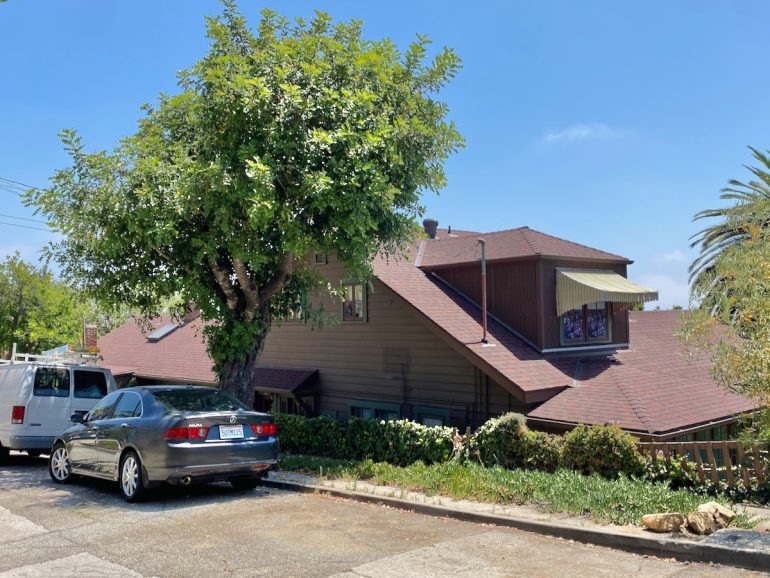
 I sincerely hope this antique washing machine is intended as decor. The wringer on top is called a mangle, which I only know because I was a Stephen King completist as a kid. While his 1972 short story, “The Mangler,” is not his best work, the Wikipedia summary is entertaining: “John Hunton, a police detective investigating a sudden rash of grisly deaths caused by an industrial laundry press called a mangle, discovers that a series of unfortunate coincidences involving the machine have inadvertently replicated a demon-summoning ritual. Due to various ingredients (including medicine containing extract of nightshade, a live bat, and the fresh blood of a virgin getting into the machine) being combined, the machine itself has become possessed by a demon. The story ends after the detective and his friend underestimate the demon’s power, and in seeking to exorcise the machine, instead goad it into ripping free of its moorings and prowling the streets in search of fresh prey.” UPDATE 9/25: Apparently, it’s a wringer, not a mangle; may we never have to know the difference.
I sincerely hope this antique washing machine is intended as decor. The wringer on top is called a mangle, which I only know because I was a Stephen King completist as a kid. While his 1972 short story, “The Mangler,” is not his best work, the Wikipedia summary is entertaining: “John Hunton, a police detective investigating a sudden rash of grisly deaths caused by an industrial laundry press called a mangle, discovers that a series of unfortunate coincidences involving the machine have inadvertently replicated a demon-summoning ritual. Due to various ingredients (including medicine containing extract of nightshade, a live bat, and the fresh blood of a virgin getting into the machine) being combined, the machine itself has become possessed by a demon. The story ends after the detective and his friend underestimate the demon’s power, and in seeking to exorcise the machine, instead goad it into ripping free of its moorings and prowling the streets in search of fresh prey.” UPDATE 9/25: Apparently, it’s a wringer, not a mangle; may we never have to know the difference.
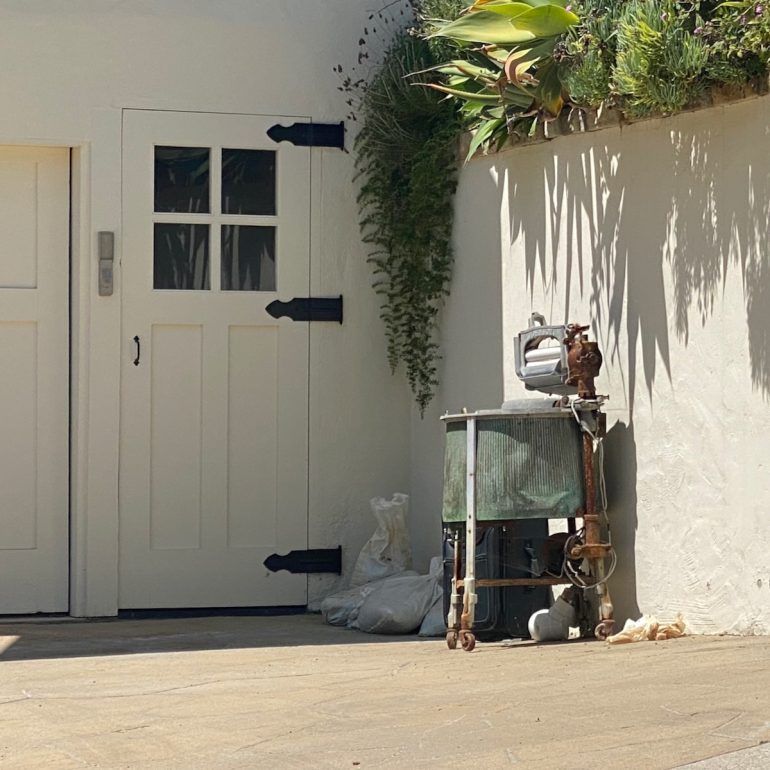 You also see a fair amount of deferred maintenance. The first house below just hit the market for $4.5 million (it includes a triplex in a separate building in back). We deduced that the garage ceiling must be crumbling.
You also see a fair amount of deferred maintenance. The first house below just hit the market for $4.5 million (it includes a triplex in a separate building in back). We deduced that the garage ceiling must be crumbling.

 But on the painting front, there are signs of activity. Or maybe that’s graffiti in the second photo?
But on the painting front, there are signs of activity. Or maybe that’s graffiti in the second photo?

 Speaking of paint, some bold choices here!
Speaking of paint, some bold choices here!
 As always in Santa Barbara, plants were a highlight. I love a doorway cut into a hedge; adding a door takes it to the next level.
As always in Santa Barbara, plants were a highlight. I love a doorway cut into a hedge; adding a door takes it to the next level.



 And we were captivated by the way this pine—I’m sure someone out there knows what type it is—has new growth coming out of the base of the trunk. UPDATE 9/27: “It’s in the Araucaria family,” says B. “It looks like an A. heterophylla (Norfolk Island Pine), native to an island north of New Zealand and east of Australia. It’s a funny-looking tree when mature, as the leaves grow upward, so it looks like it defies gravity.”
And we were captivated by the way this pine—I’m sure someone out there knows what type it is—has new growth coming out of the base of the trunk. UPDATE 9/27: “It’s in the Araucaria family,” says B. “It looks like an A. heterophylla (Norfolk Island Pine), native to an island north of New Zealand and east of Australia. It’s a funny-looking tree when mature, as the leaves grow upward, so it looks like it defies gravity.”
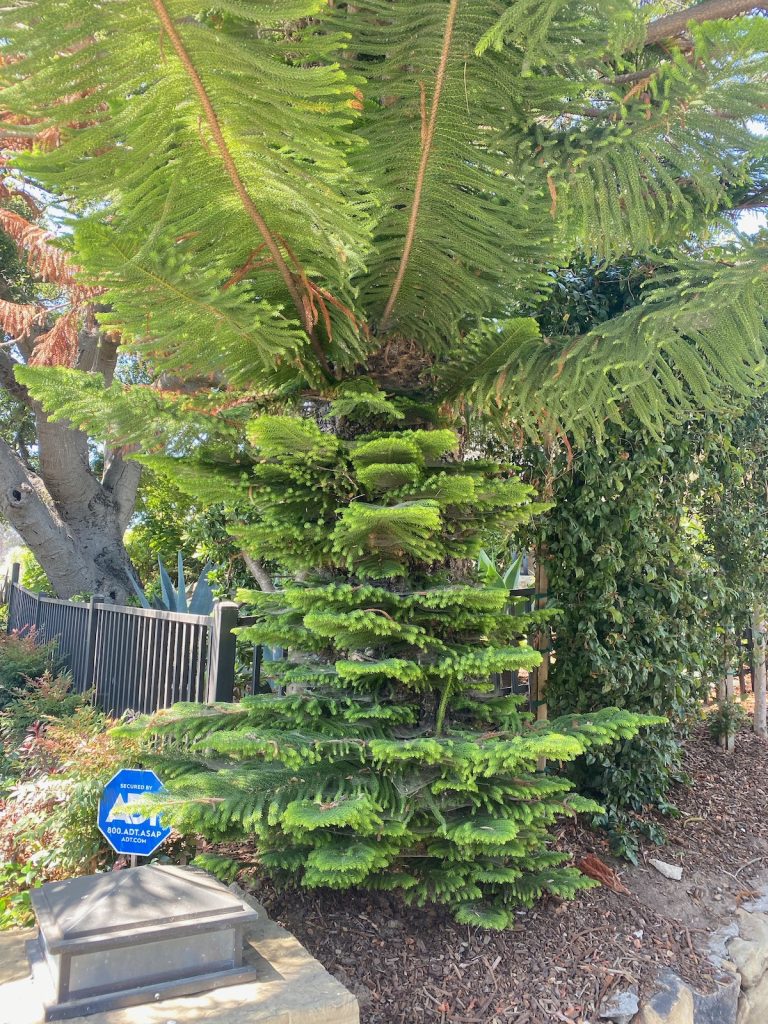 While I may be the only middle-aged man around here who isn’t into cars, even I can admire a vintage Mercedes-Benz [UPDATE 9/25: The owner tells me she’s called “The Countess”], and the Toyota Chinook earns a mention for the “one less Sprinter” decal. But the major find was a repurposed—one hopes!—Cadillac hearse called the Dracillac.
While I may be the only middle-aged man around here who isn’t into cars, even I can admire a vintage Mercedes-Benz [UPDATE 9/25: The owner tells me she’s called “The Countess”], and the Toyota Chinook earns a mention for the “one less Sprinter” decal. But the major find was a repurposed—one hopes!—Cadillac hearse called the Dracillac.


 I’d be remiss not to give a special shout-out to the stone walls everywhere. They look extra good when there’s an arch involved.
I’d be remiss not to give a special shout-out to the stone walls everywhere. They look extra good when there’s an arch involved.
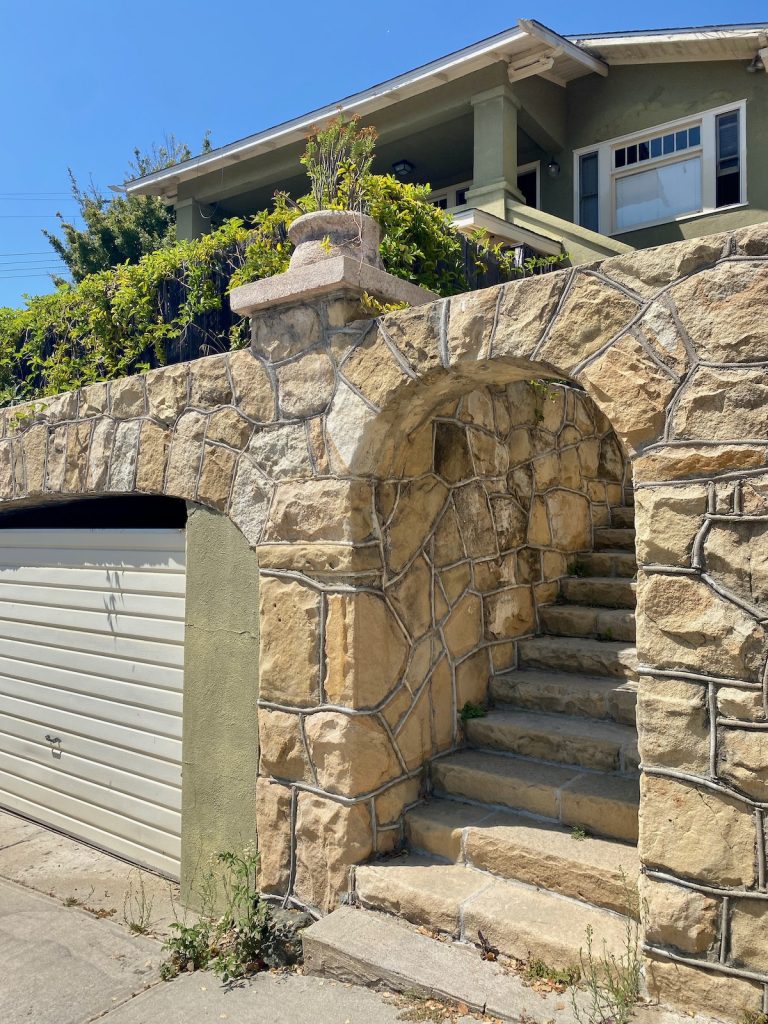
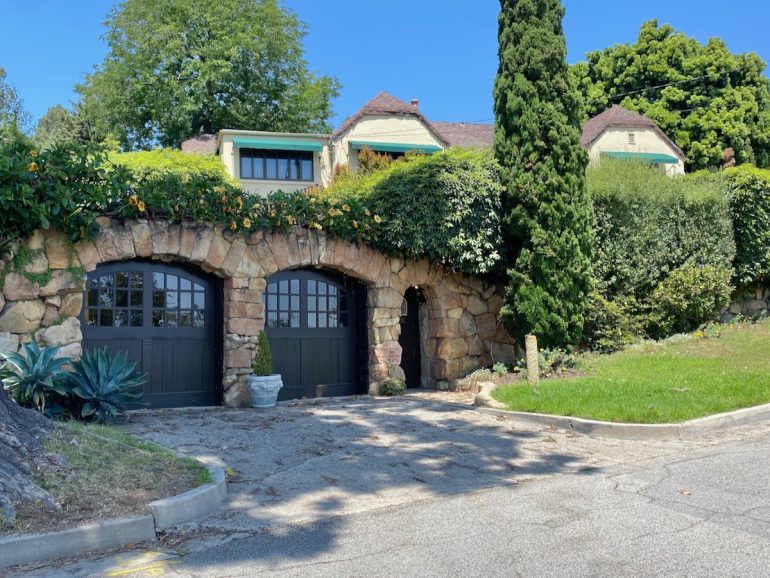 As much as I’d love a stone garage carved into the hillside, how do you get out of your car? Through the sunroof?
As much as I’d love a stone garage carved into the hillside, how do you get out of your car? Through the sunroof?
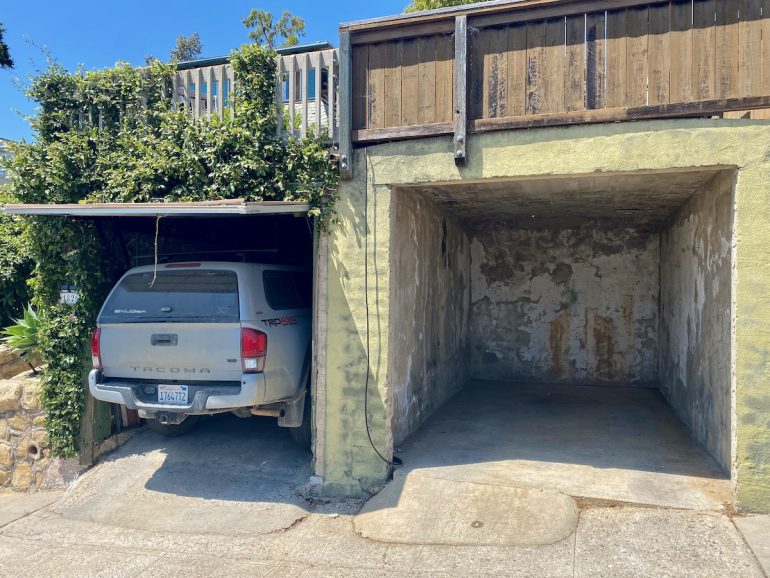 There were a lot of really nice houses. And another curved boxwood path!
There were a lot of really nice houses. And another curved boxwood path!
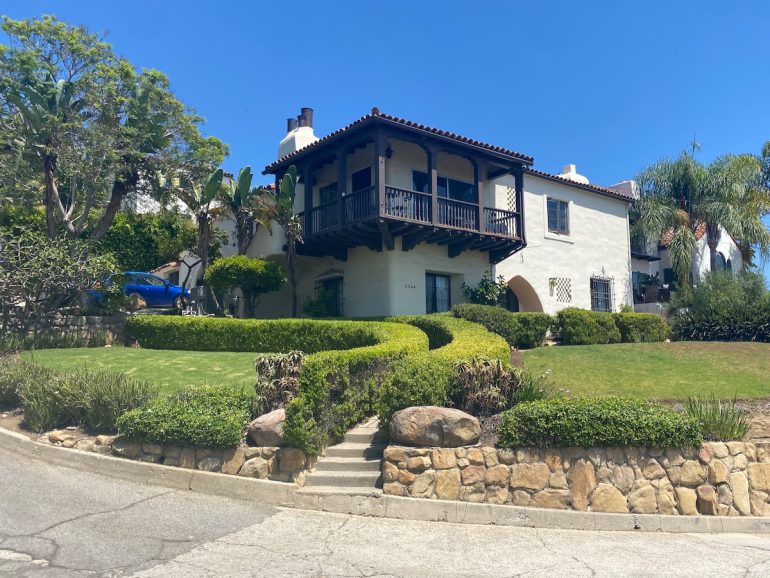

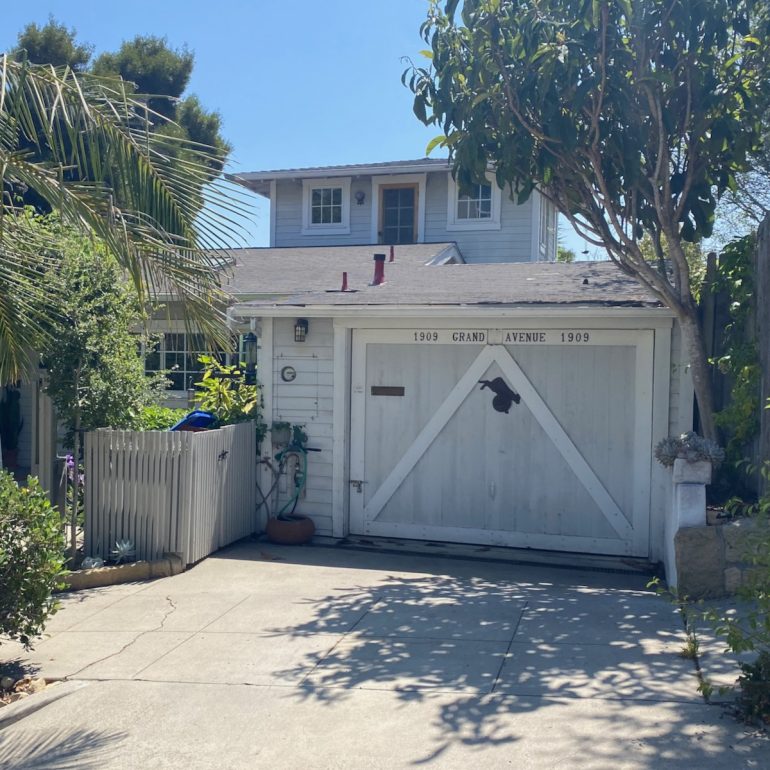

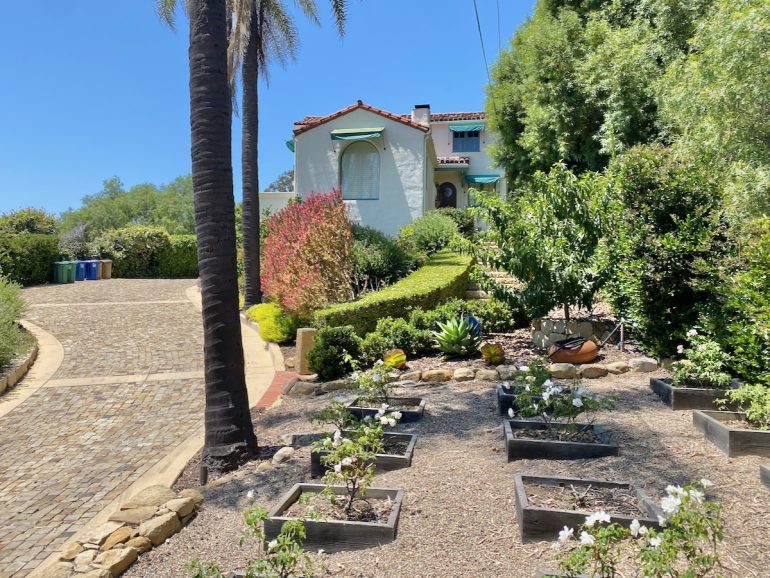 This one on Emerson Avenue has curb appeal, but we couldn’t understand the point of a screened porch in a part of the world with so few bugs. UPDATE 9/28: To keep the cats in!
This one on Emerson Avenue has curb appeal, but we couldn’t understand the point of a screened porch in a part of the world with so few bugs. UPDATE 9/28: To keep the cats in!

There are a few streets where the charm of the Lower Riviera really comes together. Take Oramas Road, half of which is a cul-de-sac, so you’ve probably never been on it.


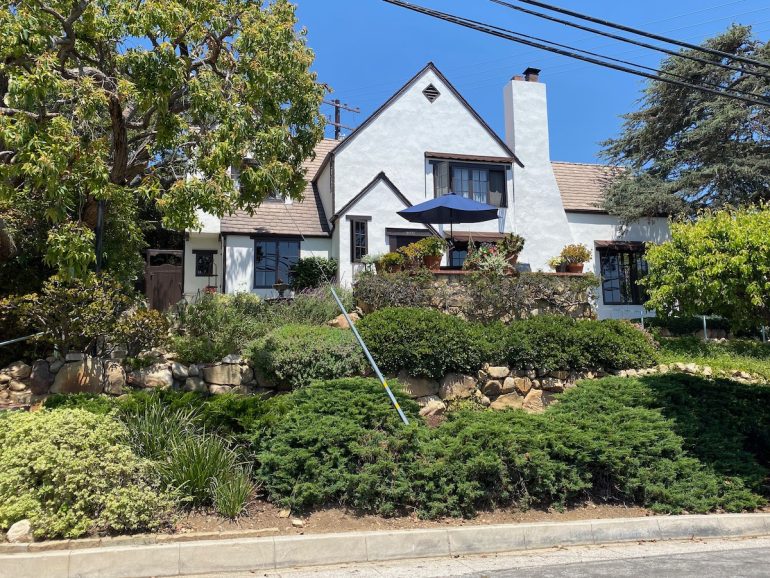

 Sierra Street is tiny, dead-ending in a San Francisco–style staircase at APS. Note the fountain tucked up against the wall! And the marvelous white house at 610 Sierra! It was built in 1920, and when it last sold, in 2014, it hadn’t been on the market since the 1940s.
Sierra Street is tiny, dead-ending in a San Francisco–style staircase at APS. Note the fountain tucked up against the wall! And the marvelous white house at 610 Sierra! It was built in 1920, and when it last sold, in 2014, it hadn’t been on the market since the 1940s.

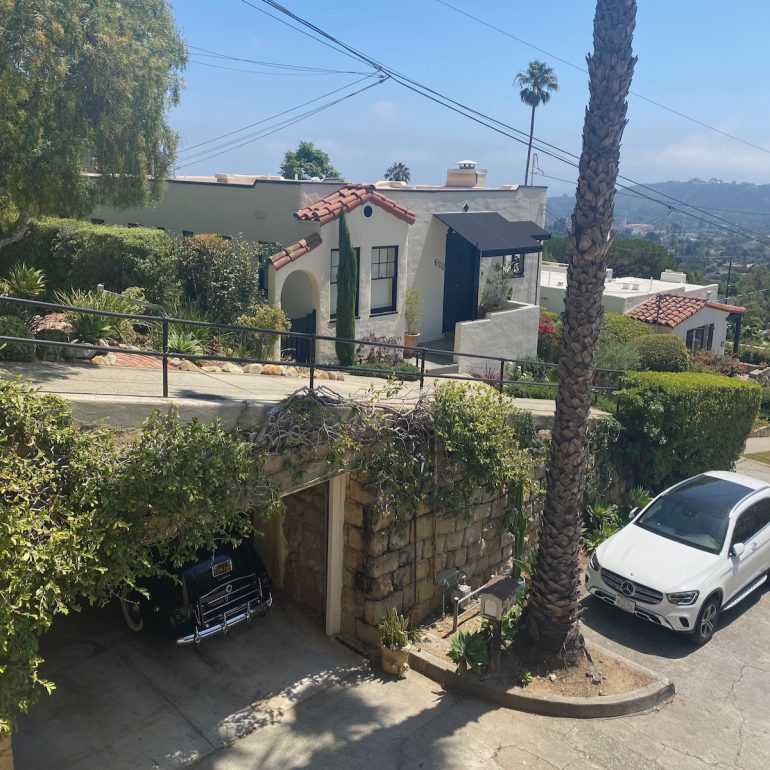
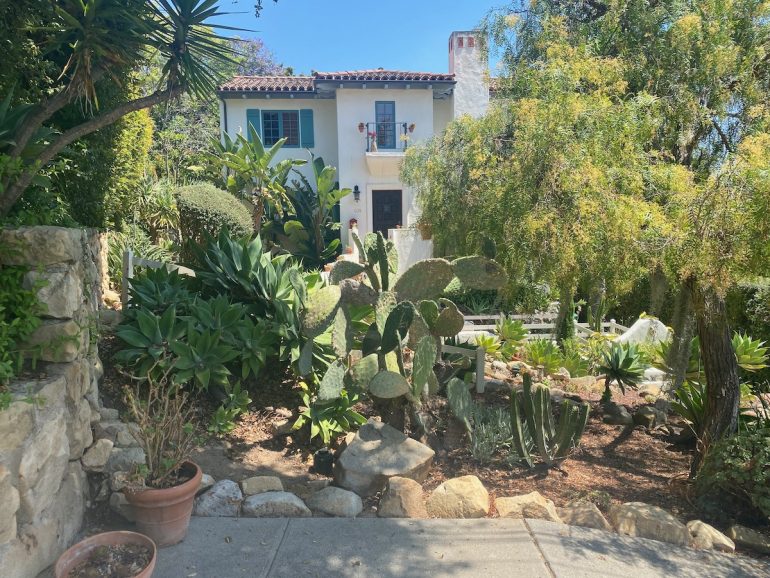


 Plaza Rubio, along the Mission Historical Park, may or may not count as the Lower Riviera, but I knew Tracey would dig the houses. According to @SBHistoricPreservation, “The row of houses (except one) were constructed in 1926 and are the work of Mary McLaughlin Craig, wife of noted Santa Barbara architect Osborne Craig. Osborne Craig died of poor health in 1922, at which time Mary Craig began using her husband’s architecture office on the second floor of the Orena adobe. Mary Craig hired one of the area’s most noted licensed architects, Ralph Armitage. With his talent and the inherited reputation of her husband as a California Spanish-style designer, Mary Craig was ready to establish her singular reputation through a masterful combination of persuasion, talent, trust, and friendships.”
Plaza Rubio, along the Mission Historical Park, may or may not count as the Lower Riviera, but I knew Tracey would dig the houses. According to @SBHistoricPreservation, “The row of houses (except one) were constructed in 1926 and are the work of Mary McLaughlin Craig, wife of noted Santa Barbara architect Osborne Craig. Osborne Craig died of poor health in 1922, at which time Mary Craig began using her husband’s architecture office on the second floor of the Orena adobe. Mary Craig hired one of the area’s most noted licensed architects, Ralph Armitage. With his talent and the inherited reputation of her husband as a California Spanish-style designer, Mary Craig was ready to establish her singular reputation through a masterful combination of persuasion, talent, trust, and friendships.”
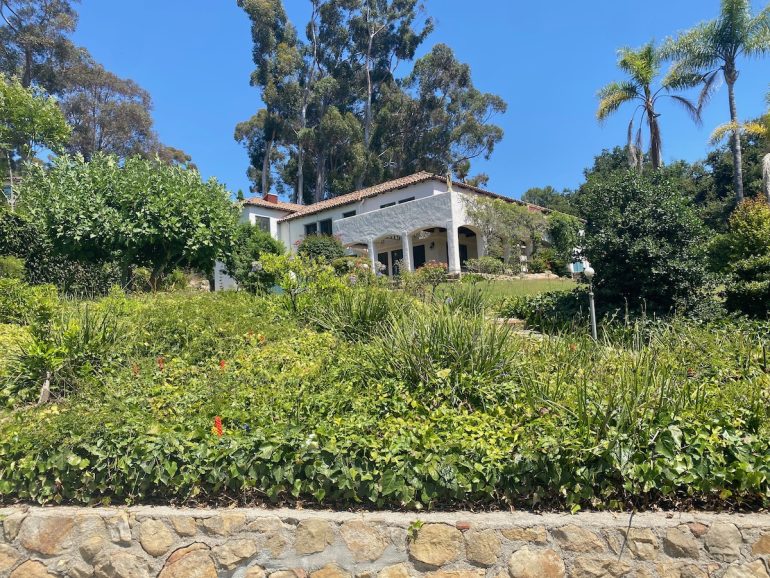


 And who can resist a secret path like the mid-block one between Plaza Rubio and E. Padre Street?
And who can resist a secret path like the mid-block one between Plaza Rubio and E. Padre Street?
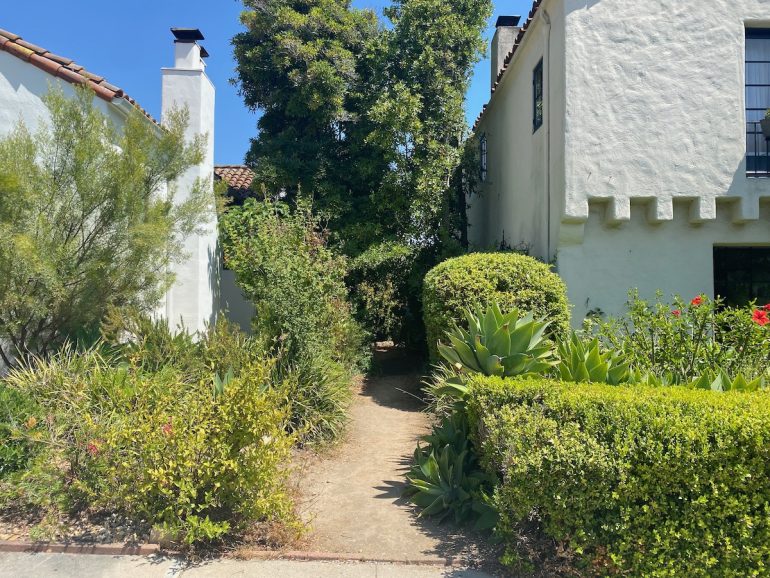 My very favorite Lower Riviera street is Bonita Plaza, a short offshoot at the west end of Grand Street. It really does feel like a plaza, complete with a bench and, in the middle, a fountain with water lilies. The house in the second photo is a 1931 Edwards & Plunkett that sold for $4.2 million in March 2022.
My very favorite Lower Riviera street is Bonita Plaza, a short offshoot at the west end of Grand Street. It really does feel like a plaza, complete with a bench and, in the middle, a fountain with water lilies. The house in the second photo is a 1931 Edwards & Plunkett that sold for $4.2 million in March 2022.
 We were pretty worn out, but attention had to be paid to the Pagoda House at the corner of E. Valerio Street and Grand Avenue. From an August 2016 Independent article, when it was on the market for $2.795 million (and sold for $2.3 million in June 2017): “The house was constructed in 1902 by a wealthy widow, Bertha Manning Parmele, who moved to Santa Barbara from her native Chicago to join her parents and siblings sometime after her husband died in 1890. Speculation is that she may have visited the World’s Columbian Exhibition in Chicago in 1893 because The Pagoda House strongly resembles the Japanese Pavilion constructed for that event. The home has only been owned by three other families in the ensuing years. The most recent former owner bought the house in 1985 and rented out many of the rooms. {Then-owner Maggie] Gallant bought the house in 2011 and has made renovating it to its original splendor a labor of love.” The Independent article includes interior photos, but I wish I had stuck with imagining the inside.
We were pretty worn out, but attention had to be paid to the Pagoda House at the corner of E. Valerio Street and Grand Avenue. From an August 2016 Independent article, when it was on the market for $2.795 million (and sold for $2.3 million in June 2017): “The house was constructed in 1902 by a wealthy widow, Bertha Manning Parmele, who moved to Santa Barbara from her native Chicago to join her parents and siblings sometime after her husband died in 1890. Speculation is that she may have visited the World’s Columbian Exhibition in Chicago in 1893 because The Pagoda House strongly resembles the Japanese Pavilion constructed for that event. The home has only been owned by three other families in the ensuing years. The most recent former owner bought the house in 1985 and rented out many of the rooms. {Then-owner Maggie] Gallant bought the house in 2011 and has made renovating it to its original splendor a labor of love.” The Independent article includes interior photos, but I wish I had stuck with imagining the inside.


 Speed round! Is this bus stop on APS the nicest one in town?
Speed round! Is this bus stop on APS the nicest one in town?
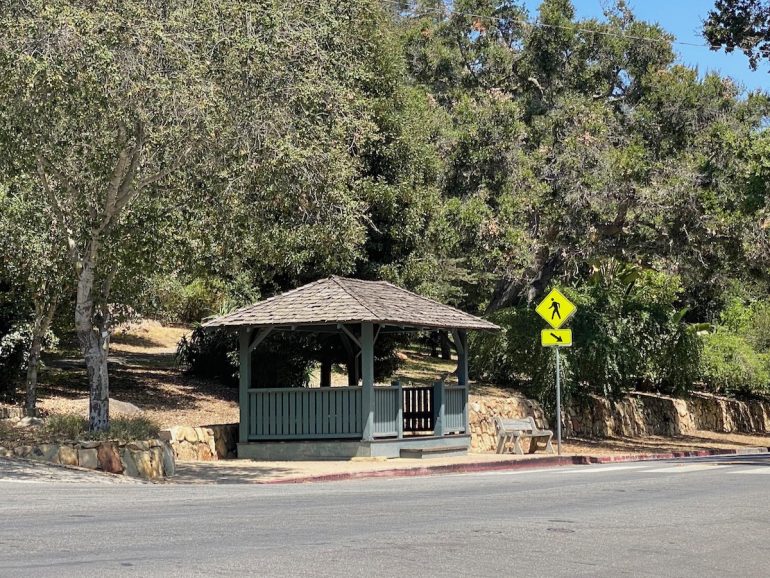 Only in California would you find this on someone’s home.
Only in California would you find this on someone’s home.
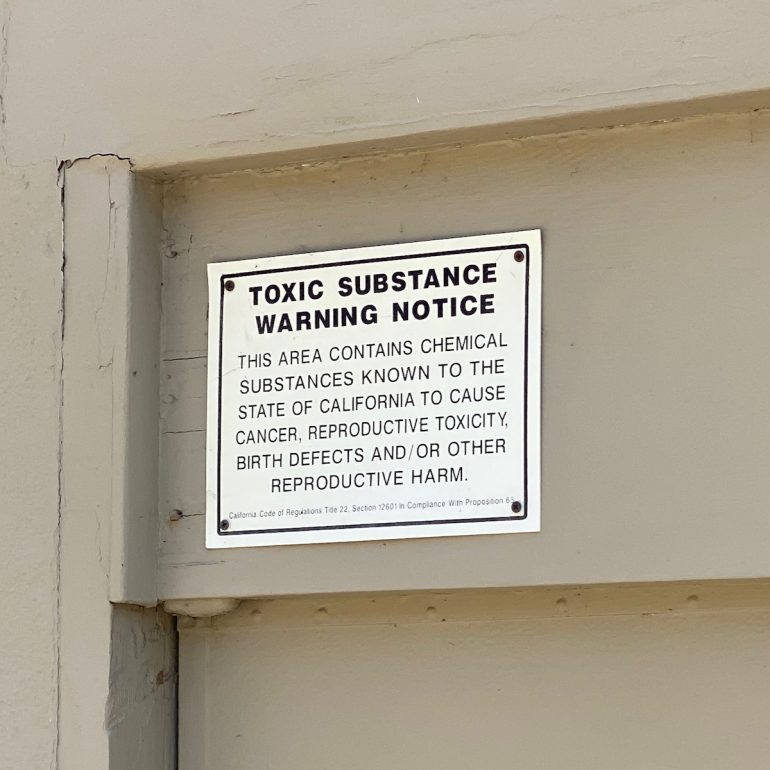 When I’m mayor, I’m going to build a garden island—or maybe a fountain!—in the asphalt plaza at Loma and Arguello.
When I’m mayor, I’m going to build a garden island—or maybe a fountain!—in the asphalt plaza at Loma and Arguello.
 Anyone up for a little one-on-one?
Anyone up for a little one-on-one?
Walk With Me…
Downtown Santa Barbara
• The Upper Upper East Is Busting Out All Over
• The Presidio: In the Footsteps of Old Santa Barbara
• Brinkerhoff, Bradley, and Beyond
• Mixing Business and Pleasure in East Beach
• It’s Only Milpas Street (But I Like It)
• The Haley Corridor Is Keeping It Real
• The Small Pleasures of Bungalow Haven
• Is There a Better Neighborhood for a Stroll Than West Beach?
• E. Canon Perdido, One of Downtown’s Best Strolling Streets
Eastside
• Where the Eastside Meets the Lower Riviera
Oak Park / Samarkand
• The Side Streets and Alleyways of Upper Oak Park
↓↓↓ The Small-Town Charms of Samarkand
The Riviera
• Scaling the Heights of Las Alturas
Eucalyptus Hill
• On the Golden Slope of Eucalyptus Hill
• Climbing the Back of Eucalyptus Hill
San Roque
• Voyage to the Heart of the San Roque Spider Web
TV Hill / The Mesa
• Walking in Circles in Alta Mesa
• West Mesa Is Still Funky After All These Years
• A Close-Up Look at TV Hill
Hidden Valley / Yankee Farm / Campanil
• Campanil is a Neighborhood in Flux
• An Aimless Wander Through Hidden Valley
• The Unvarnished Appeal of Yankee Farm
Hope Ranch / Hope Ranch Annex / Etc.
• A Country Stroll on El Sueno Road
Montecito
• Out and Back on Ortega Ridge
• The Heart of Montecito Is in Coast Village
• Quintessential Montecito at Butterfly Beach
• Once Upon a Time in the Hedgerow
• Where Montecito Gets Down to Business
• In the Heart of the Golden Quadrangle
• Up, Down, and All Around Montecito’s Pepper Hill
• Montecito’s Prestigious Picacho Lane
• School House Road and Camphor Place
Summerland / Carpinteria
• A Stroll in the Summerland Countryside
• Admiring the Backsides of Beachfront Houses on Padaro Lane
• Whitney Avenue in Summerland
Goleta / Isla Vista
• Where the Streets Have Full Names
• The Past Is Still Present in Old Town Goleta
• Social Distancing Made Easy at UCSB
Sign up for the Siteline email newsletter and you’ll never miss a post.


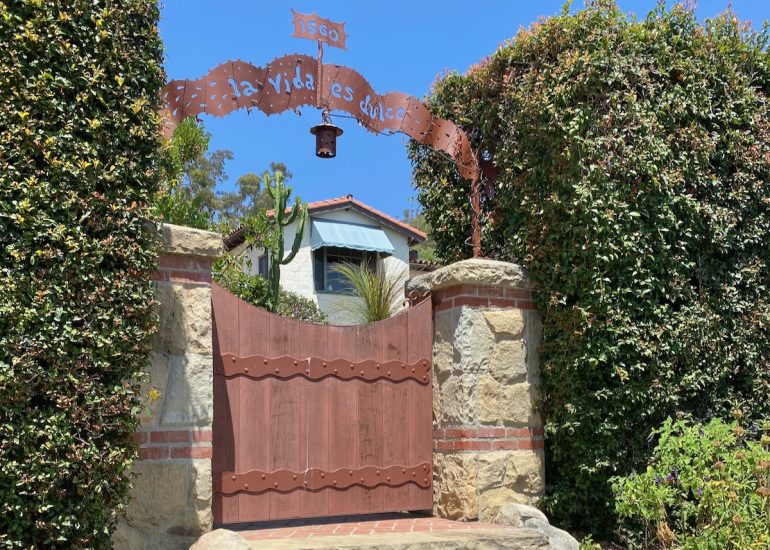






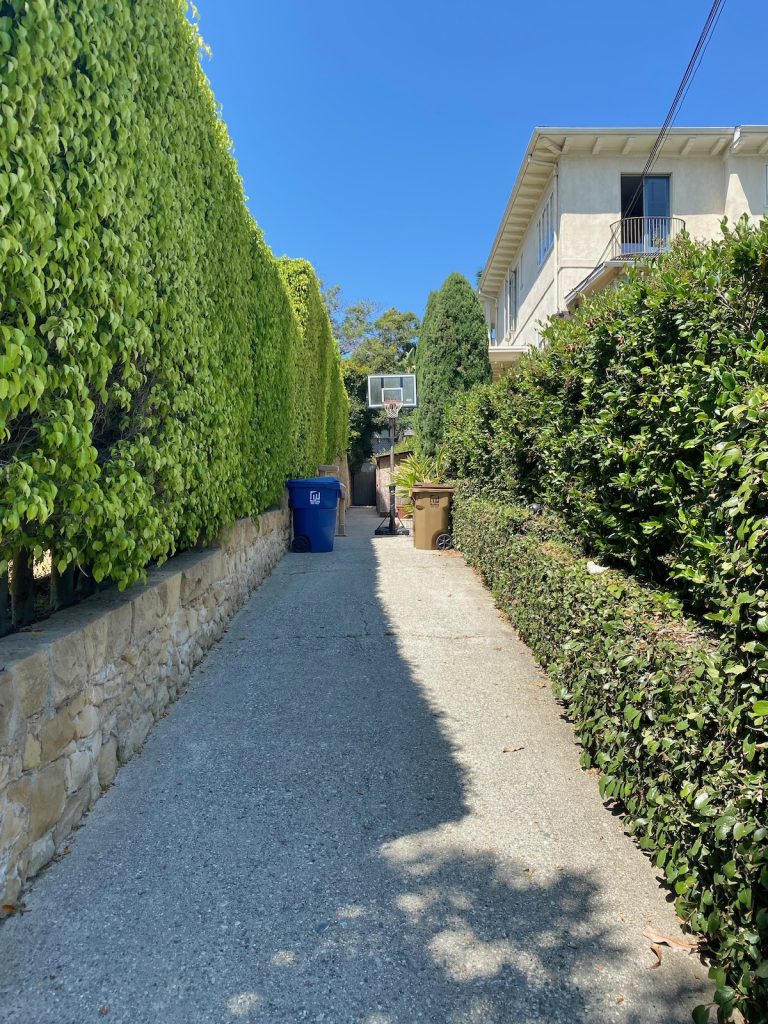






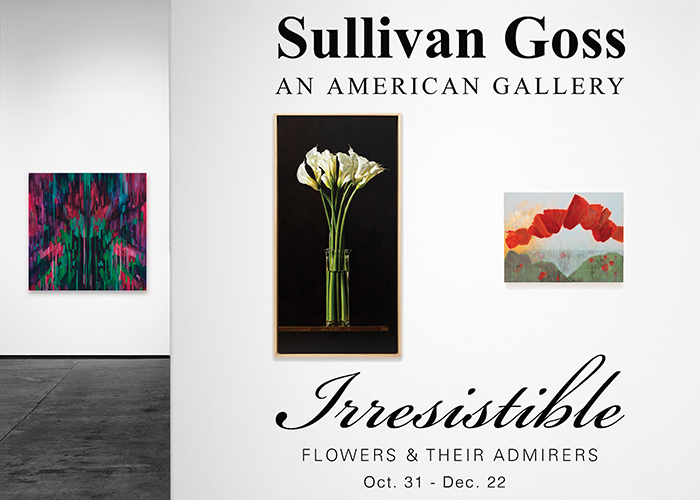





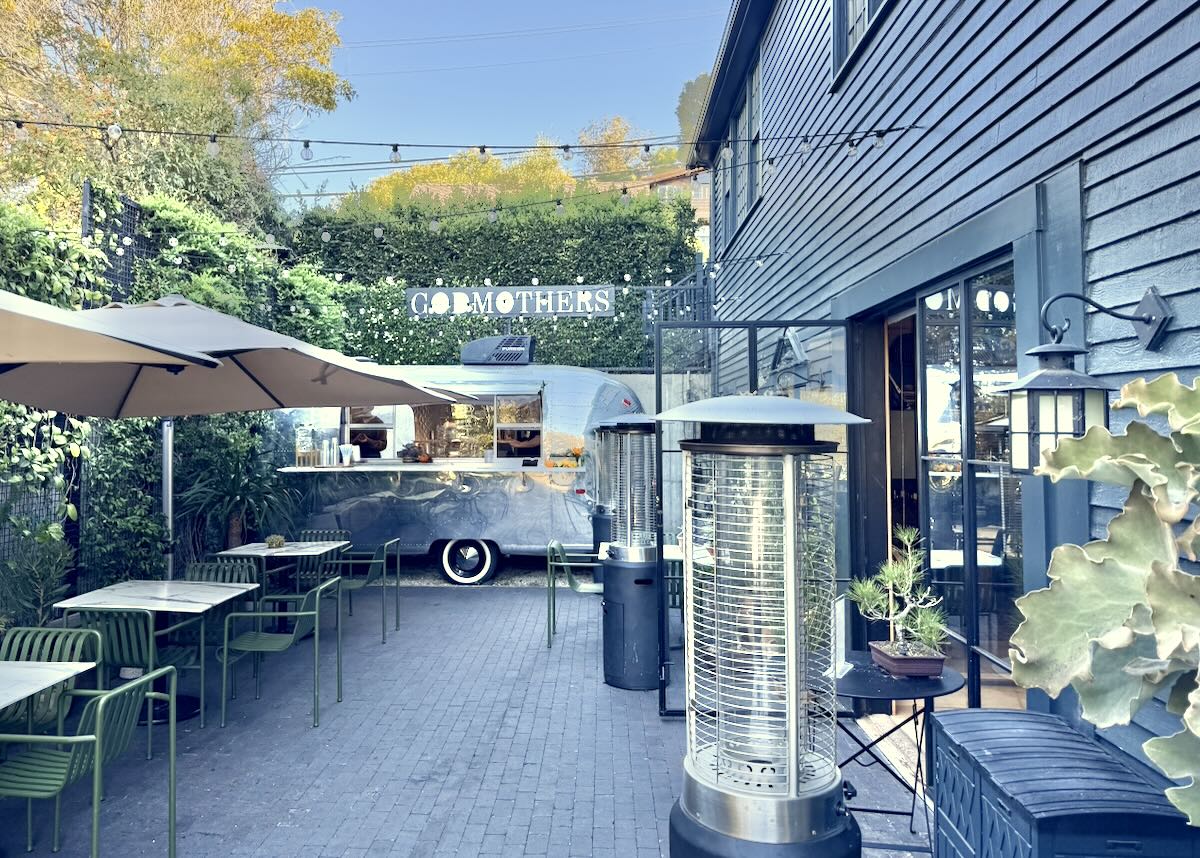
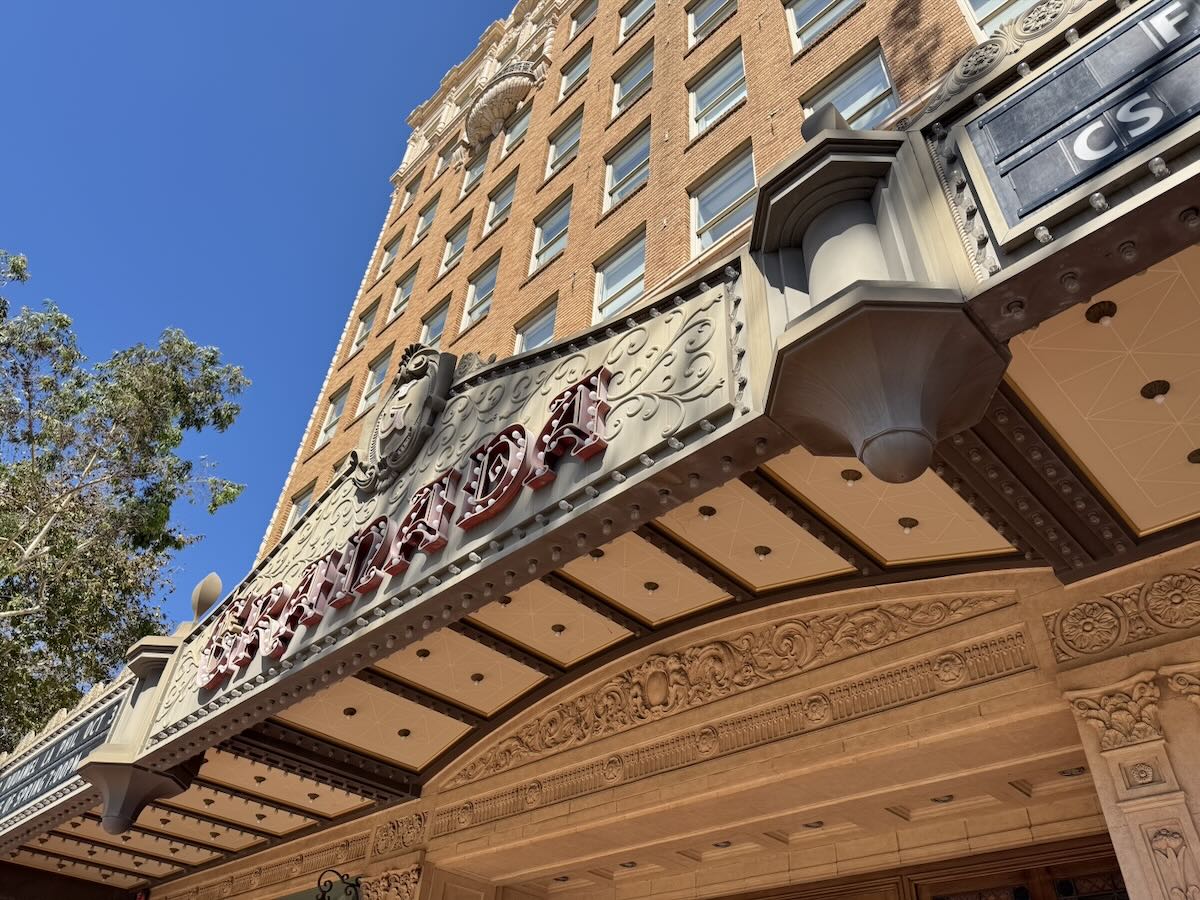

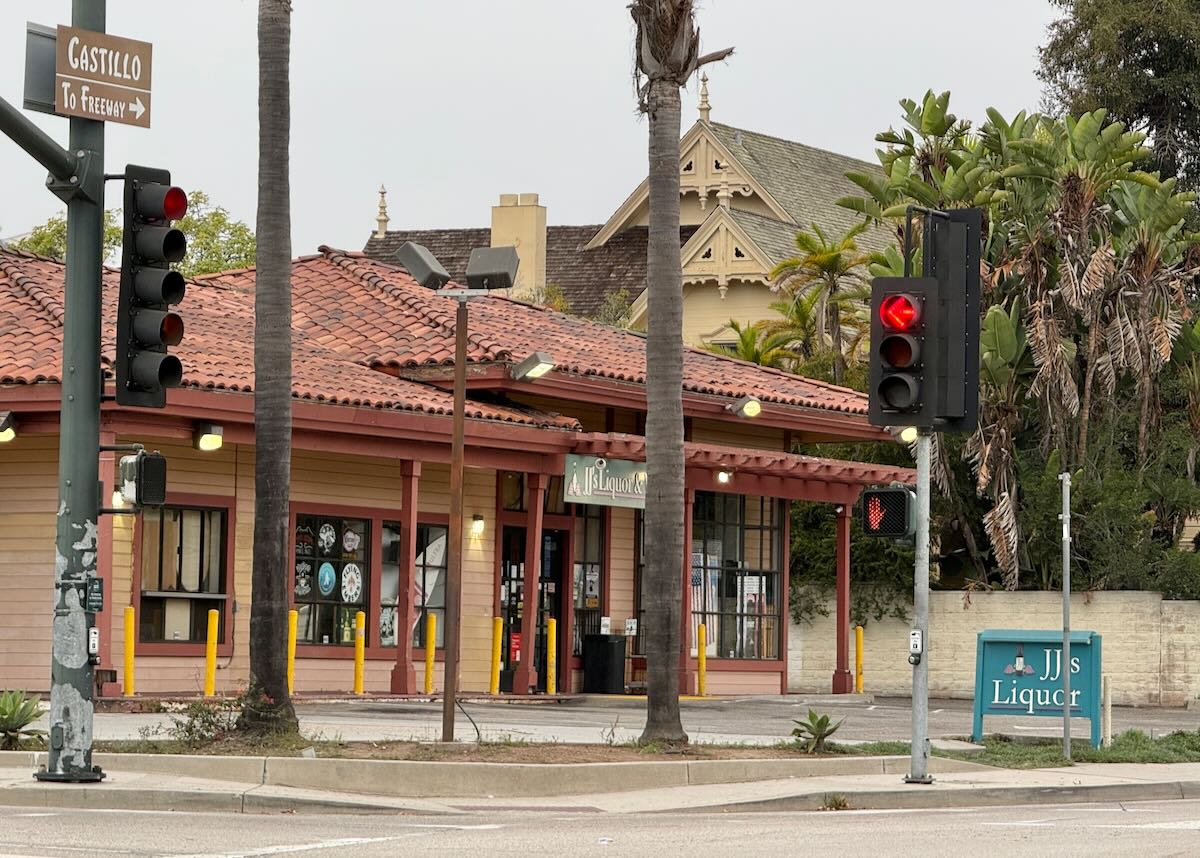

Great photos. When I go to the Riviera movie theatre I walk from downtown and up the Sierra Street staircase. I love the view from the top railing.
There is a great staircase you can take between Pedregosa/Loma down to Pedregosa/Grand.
Also the house at 1741 Prospect (I think that is the address) is a Greene & Greene home if you haven’t seen it before.
What a wonderful reminder of how extraordinary this place we call home is. Thank you for these walking adventures.
love the photos- we share the same idea of what is worthy of a capture
That “bus stop” is actually an old trolley stop on APS
I believe it is a historical landmark?
Another fun fact is the fountains in town – like at Bonita Plaza were originally horse troughs !
Great coverage of a quirky neighborhood. Of note is how some of the streets have changed name since the sidewalks were put in and engraved at corners. For instance, I’ve lived on Prospect Ave. for over 50 years, but just recently noticed that it was apparently originally Prospect St. And Loma had an earlier name—Putnam Ave.—captured for posterity when the sidewalks were put in. Only noticed when you walk!
I walk on these streets everyday and marvel at the interesting homes, stone walls and secret paths and staircases. If you have walked from Orpet park over to Paterna there is a wonderful collection of toy frogs laid out that has continued to grow through the years. I believe it was started as a tribute to a child who loved frogs.
Terrific walk. I lived on upper olive while at UCSB on the Riviera. Great walking always. By the way that was a wringer on the washer A mangle was for ironing large items in the home like sheets tablecloths etc. I used to use one at my in-laws. Not fun. Love your walks. Thanks.
Fifty years ago, my partner and I lived in Santa Barbara near the Arlington Theatre. We used to walk up to to lower Orpet Park and picnic there. About ten years ago, we visited the park and found that its state of neglect hadn’t changed much.
I think Maggie Gallant sold the Pagoda House a few years ago and someone else is restoring it.
Ditto Patricia on the wringer on the washing machine. We owned a resort for 24 years and used one of these, a bit newer model, to wash all the sheets and towels for the beds.
We bought the stucco house on Emerson Avenue (corner of Orena) and were the third owners since being built in 1913. We lived there for 26 years and raised our two girls there. You questioned why we would have a screened in porch in Santa Barbara, where there are no bugs. You are correct in assuming the porch wasn’t originally screened. The sole purpose of screening it was to allow our two indoor cats, Millie & Lucy, a place to lounge “outside” without being munched by coyotes. That porch was a beautiful little aerie up among the rare eucalyptus trees (a rare species, the only two in SB), and we enjoyed many evenings out there with a glass of wine. People would walk by and not even know we were up there. All great memories of a wonderful house that we loved and cared for.
All the houses but you missed the best part. The Dali egg and breakfast bar…you can go back, retrace your steps then find it!